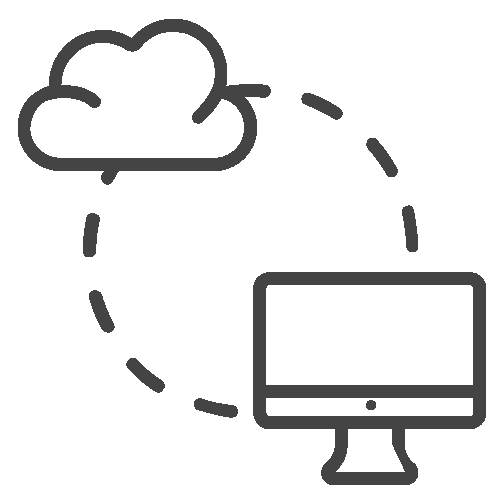How I can help
Making learning and understanding easy
Education and design are the sectors that form the backdrop to my career. I help you by bringing to your learning content over 15 years of experience in delivering creative communication projects and over a decade of involvement in the analysis, design, and delivery of learning resources that support the gaining of new knowledge or skills.
This ability to create content that meets your learning objectives, is designed for ease of use, and looks visually appealing is what sets me apart.
Those working at the intersection of education and design have many labels: training designer, curriculum developer, learning and development specialist, instructional designer, etc. I believe consultant accurately describes what I do. I co-create project plans, timelines, and deliverables for content and training materials with stakeholders. I do this based on a training needs analysis. I use this analysis to design assets that guide people, using instructional content, towards agreed learning objectives.
Maybe you need your existing e-learning storyboard built out to a completed, learner ready course? Maybe you need help in developing your course from nothing more than an initial idea? Whatever your needs, I can help you create learner focused, business needs centred, beautiful learning solutions.
You can find out more at How I work , including consistency and compliance to department and company standards; training needs assessments and gap analysis preparation; subject matter experts and gathering an understanding of technical content; and other learning design considerations.
Organisations I've worked with include:










How I work
How I Work
Learning done by analysis and design
The products and resources we use to help other people learn need to have both practical and appealing features.
To create effective training, you need to identify the learning objectives. To identify your learning objectives, instructional designers adopt one of a number of different processes. The most commonly used process is called ADDIE, an acronym for the five key training course creation activities: Analysing, Designing, Developing, Implementing, and Evaluating.
Let's take a closer look at what this means in practice. To elaborate a little, it looks like this:
This is the first, and possibly most important phase. This is where I work to identify the key elements needed to design effective learning. This can be as simple as sharing your existing knowledge and findings. Alternatively, a training needs analysis might be required to identify the learning objectives, and build a learner profile.
At the design phase, I'll take everything collected and learned during the analysis phase to begin planning and structuring your content. This will include an outline of your project’s learning activities, exercises, knowledge checks, assessment techniques, visual design, and navigation.
At the end of the design phase, all of these learning and development training decisions will be presented in a document called a storyboard. This storyboard is a blueprint for your course. A storyboard can be as simple as a series of sketches illustrating how the course flows.
This is where, as an instructional designer, I take the storyboard and create the lessons, activities, exercises, graphics, etc. This phase involves a series of reviews, followed by a period of testing to iron out any issues that become apparent.
This is the exciting bit where the course gets published and learners can finally access the training. Usually, this means publishing online or uploading the course to a Learning Management System (LMS).
Publishing your course is not the end of the process. You should now evaluate to measure how well your training met the learning objectives detailed back in the analysis phase. Questions to ask and/or areas to explore can include:
- Do learners like the course?
- Do learners achieve the learning objectives at the end of the course?
- Do the learners change their behaviours?
- Does the course help the company achieve its business goals?
That's quite a lot! As you can see, it's a process. A process of analysing needs, designing an instructive solution, developing training materials, and evaluating their effectiveness.
I work a lot with people: clients, subject matter experts, learners, and other stakeholders. I also work a lot with things: authoring software such as Storyline and Articulate; existing resources from clients and subject matter experts; words and images to form new content, etc. You can find out more about that by following the links below.
Portfolio
Examples of e-learning courses
FAQ
Things people ask, frequently
From "what is it?" to "how much does it cost?" Expand the accordion below to find out.
I collaborate with leadership teams and senior stakeholders across multiple projects and contracts addressing a wide range of educational and business needs.
I’m hired to consult on strategy, and I get hands-on with the design and delivery of blended training solutions that seamlessly integrate face-to-face learning experiences with online and mobile technologies.
In a real world situation, it might look a little like this:
Primary research among relevant stakeholders to understand more about their appreciation of key opportunities for curriculum development while setting expectations regarding learning objectives, time, and budget. Heavy involvement here with leadership teams.
Asset audits to review existing content. Focusing on quality control to ensure learning objectives can be met and challenging learning efficacy and innovation where necessary. Heavy involvement here with subject matter experts as we discuss learning journeys, phased training, competency mapping, etc.
Research, scope, develop, implement, and monitor all training programmes. This is where I get involved in the instructional design process. More about that at How I work.
All of this requires a heady mix of problem solving, critical thinking, innovation, and creativity. It’s not without moments of complexity, but I’ve got my toolkit of hard and soft skills built up over the years. Those key skills include being:
- Creative, but disciplined. With over 150 design assets created and 750 training analysis exercises completed, I’m comfortable with both analysis and design.
- Engaging, but critical. Involved in primary research with relevant stakeholders to understand their appreciation of key opportunities for curriculum development while setting time and budget expectations.
- Consultative, but hands-on. Proposed solutions to leadership teams and senior stakeholders, but actively involved in delivery.
- Self-taught in many of the tools and technologies. Including Kanban for project management, ADDIE for instructional design, and Adobe Creative Cloud for digital design. I'm a self-starter able to learn and find resources without a formal structure or teacher.
Instructional design is the process of taking information and presenting it in a way that makes it engaging and easy for learners to understand.
Instructional designers and training developers adopt one of a number of recognised processes when creating educational and training resources. The most popular and widely used process is called ADDIE. ADDIE covers the training resource creation essentials of Analysing, Designing, Developing, Implementing, and Evaluating.
You can find out much more about ADDIE in my How I work section.

Analyse training needs

Analyse the audience and identify learner profiles

Specify learning objectives

Plan appropriate learning strategies

Create new content elements according to learning objectives

Rewrite and restructure existing content according to learning objectives

Create assessments to test learner knowledge and/or new skills acquired.

Design the course’s look and feel

Storyboard the course prior to development

Develop the course in an authoring tool such as Articulate Storyline or Adobe Captivate

Publish the course online or on an Learning Management System (LMS)

Review the course’s impact on learners’ performance
The job of instructional designer will vary from project to project and company to company. Depending on the client, I will sometimes find myself doing more of the above, sometimes less.
This is far from an exhaustive list, but does give insight into some of the things instructional designers do.
In business, you can’t just wait for people to chance upon what you need them to know. Instead, you need to create a dedicated learning experience.
This learning experience will be one where you’re plugging an identified skills gap by encouraging your learners to focus on certain very specific bits of information.
The importance of instructional design is to make it easy for learners to understand those specific pieces.
I prefer Articulate Storyline or Articulate Rise. Like most in the creative sector, I'm familiar with Adobe. Adobe Captivate is my second favourite.
If it took six months, would that be too long?
Only joking! However, it does highlight that I need a starting point and that things need constrained to keep the discussions around timing and price (a separate question) grounded.
My answer of six months immediately discounts flights of fancy regarding all the fantastic things that could be done and focuses the mind on what can fit into a given size. Once I know the constraints, I’ll work with you to create a development timeline.
If you've read the how long does it take question, you'll know what I'm going to say: it depends.
Do you require a training needs or gap analysis? Have you done a learner analysis? Do you already have learner resources to use as a starting point? Do you want the course to be linear? What about advanced interactivity? Do you have an e-learning template with branding guidleines? Is audio a concern?... I could go on, but I'm sure you get the idea. All of these aspects, and more, influence the cost of any learning project.
With all the above being said, by far the best way to cost your next learning project is to discuss it. Feel free to contact me.
Contact
Get in touch